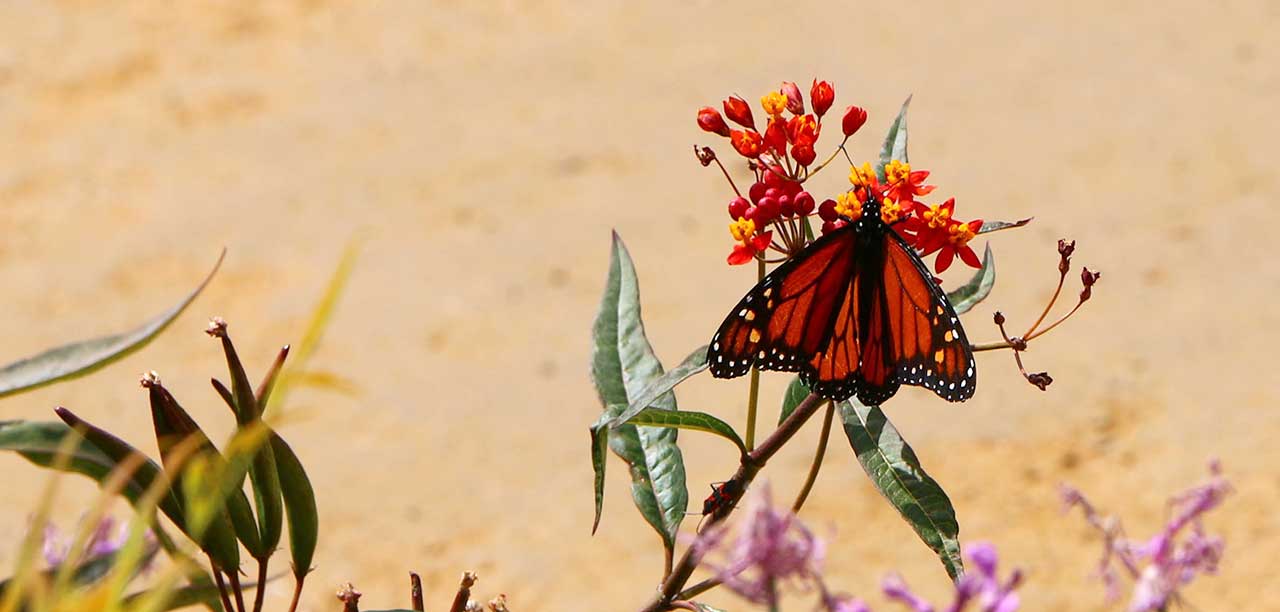Canyon Laker helps to reverse decline of monarch butterflies
Thirty-five years ago, Canyon Lake was nestled in-between life-giving hills. Hills that were alive with growth: flowers and plants that were part of the pollination process that enabled the insects and other plants to thrive.
Thirty-five years ago, a young couple from the Netherlands visited Canyon Lake at the beginning of their six-week-long travels in the United States. Both being lepidopterists (individuals who study and collect butterflies), their mission was to observe and identify butterflies native to the regional areas of the West Coast.
Within an hour after their arrival, they caught a monarch butterfly which proved to be their most amazing find during their entire trip. They were impressed with the abundance of butterflies and moths that they found in the Canyon Lake area.
At one time, monarch butterflies and other various butterflies and moths were found in abundance in Canyon Lake, but since the 1990s there has been a noticeable decline. The past few years, these insects seldom appear in the area.
Long-time residents can remember having to clean the windshield of their car after driving down Newport Road during the time of the monarch butterfly migration. Monarch butterflies are not able to survive the cold winters of most of the United States so they migrate south and west each autumn to escape the cold weather which makes Canyon Lake an ideal migration location.
However, the entire pollination process has been limited by the expansive development of open spaces, droughts, use of pesticides, and other items which are not pollinator friendly.
Canyon Lake no longer has the abundance of plants and insects, especially butterflies, which were once prevalent in the area. In addition to Canyon Lake, other cities and some rural areas have also noticed the same decline. According to Marcus Gray, Biologist at Audubon International: “In the last 20 years, monarch butterflies have declined by 90 percent. Since the 1980’s, butterflies generally, across all species, have declined by 40 percent.”
Canyon Lake resident, Ted Horton, is taking this situation very seriously. Ted became intrigued with the monarch butterflies since visiting the pine groves in Pacific Grove, California, when he and his wife Nancy lived in Monterey during the 1990s. At certain times of the year, the trees were aglitter with fluttering butterflies, resting during their migratory travels along the Pacific flyway.
Monarch butterflies are not the only insects that Ted has had a desire to create healthy habitats for growth. His earliest experience was at the Pebble Beach Company where he and his colleagues devoted a great deal of effort to establish indigenous plants that created habitat to a number of troubled species of animals and insects. One of the most successful programs was devoted to supporting habitat for the legless lizard, a small gecko/worm-like lizard.
Ted is currently on the Board of Audubon International (auduboninternational.org), the newest partner of the Monarch Joint Venture: the largest collaborative established to arrest the decline of monarch butterflies. The project has devoted recent attention to guidance of large corporate, public lands and golf courses in particular to create habitat for the monarch butterflies.
Audubon International discovered that golf courses represent a wonderful opportunity to plant Milkweed and other wildflowers to provide everything monarchs need to survive. With this thought in mind, “Monarchs in the Rough” was established. In this program, information will be available which will guide land managers through pesticide reduction, site preparation, and planting and long-term maintenance of habitat for pollinators using designated areas in golf courses across our nation.
Perhaps the most prevalent reason for the decline of the monarch butterfly population in any area is the dwindling supply of the Milkweed plant. Monarch butterflies only lay their eggs on Milkweed, and caterpillars only eat Milkweed; however, the plant is being cut down to build houses, buildings and streets. In recent years, numerous wildfires have destroyed much of the formerly available Milkweed. The general population of citizens also removed Milkweed in their own yards because it doesn’t smell very good or they view it as a weed. But what is not realized is that monarch butterflies need Milkweed in order to survive.
Ted is making his own plans to help create a butterfly-friendly habitat in his own backyard and urges other Canyon Lake residents to do the same. At this time, only a couple of species of Milkweed are acclimated to Southern California weather. Fortunately, they can be ordered from various nurseries in five-inch potted plants. The plants require well-prepared garden soils.
For the hardy gardeners, and for larger areas, seed can be used to establish the plants, but often require two to three years of tedious and patient gardening to flourish. Ted will be placing some of these potted plants in his garden and even perhaps in the rough of the Canyon Lake Golf Course to accompany purple and yellow flowering plants that are attractive food sources for butterflies.
When asked how Canyon Lake residents could join in the process, Ted suggests a possible long-term project: “Together we can develop patches of appropriate habitat, flowering plants for nectar and Milkweed for egg hatching sites. We can work together to manage larger, open space habitat that could be adapted to appropriate plantings for the Monarch butterfly and other pollinators.”
Until this can be put into place, Ted does have a suggestion for immediate participation by singles, couples and families of Canyon Lake. “Plant a few Milkweed plants in your garden to see what happens. I wonder how many plants it will take to make a tiny difference. Imagine if we all had just a few plants, would it add up?”



 April 26, 2024
April 26, 2024